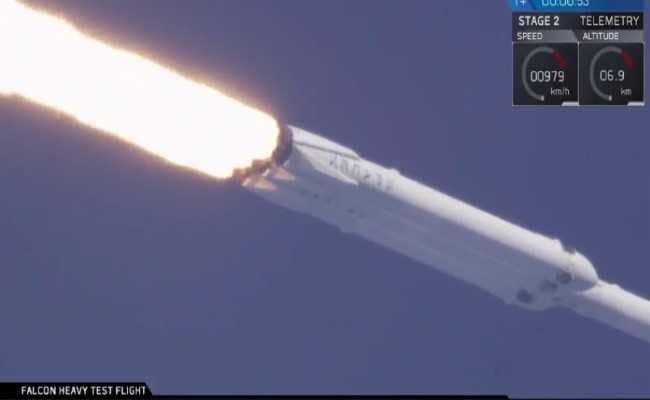Hamartia Antidote
ELITE MEMBER

- Joined
- Nov 17, 2013
- Messages
- 35,188
- Reaction score
- 30
- Country
- Location


SpaceX Falcon Heavy to Launch US Space Force’s USSF-44—First Use of Rocket in 3 Years
The Falcon Heavy is gracing the skies again, and it is for Space Force's needs.
SpaceX will soon fly the USSF 44 mission that will deliver the payload to orbit, helping the United States Space Force to bring two satellites outside the planet. The Falcon Heavy is the vessel of choice here, and it is the famous large-capacity rocket from SpaceX which has not flown for three years, with the spacecraft only being used three times since its 2018's release.
The world may be focusing on Starship for the massive power and thrust capabilities for long-haul missions, but the Falcon Heavy can bring massive loads as well.
The United States Military's Space Force already has a placeholder for its future launch of the USSF 44 mission, employing SpaceX and its Falcon Heavy to bring their payload to orbit. The information it released on its live stream placeholder claims that there would be two satellites coming, an unnamed massive one, and a micro-satellite called the TETRA-1.
The rocket would launch from Launch Complex 39A at the Kennedy Space Center in Florida, taking place later this month by October 28.
The exact time for the launch is not yet confirmed for now, but Space Force said that it will reveal the time for the public to tune in to for its launch. The livestream video placeholder is found below this article for your viewing needs.
Space Force Employs the Resting Rocket
According to CNET, the Falcon Heavy has not flown since 2019, and the resting rocket has different postponements and was kept in SpaceX's hangar for a long time. Now, it is preparing for its next mission and dusting off the cobwebs for its October launch, delivering the US Space Force's cargo to orbit, being its chosen vessel for its requirements.SpaceX and its Rockets
SpaceX is famous for its reusable rockets that are available for many missions and launches toward orbit, delivering different payloads that will go on their way to space. One of its recent projects of SpaceX is the NASA DART mission which made a significant help to the venture, particularly by bringing the device to orbit via the Falcon 9.The Falcon 9 rocket also made the recent Crew 5 astronauts reach their destination on the International Space Station, together with the Dragon vessel from the company.
On the other hand, its massive capacity spacecraft, the Falcon Heavy, saw many postponements for its use, but it is still seeing contracts and bookings from many that need it. The rocket is also reusable, particularly as it is a combination of three Falcon 9s strapped together to produce significant power to launch its missions.
SpaceX has a massive array of spacecraft available from their development and innovation, most of which are centered on the Falcon series. The Falcon Heavy may be resting and awaiting its mission, but it is still a capable rocket that can carry massive loads to space, and deliver it with ease for those that need to send their tech to the great beyond.


